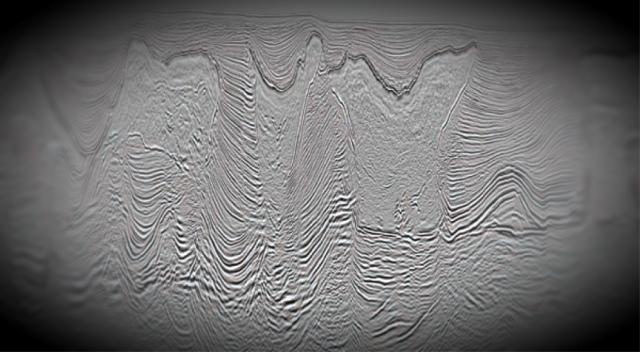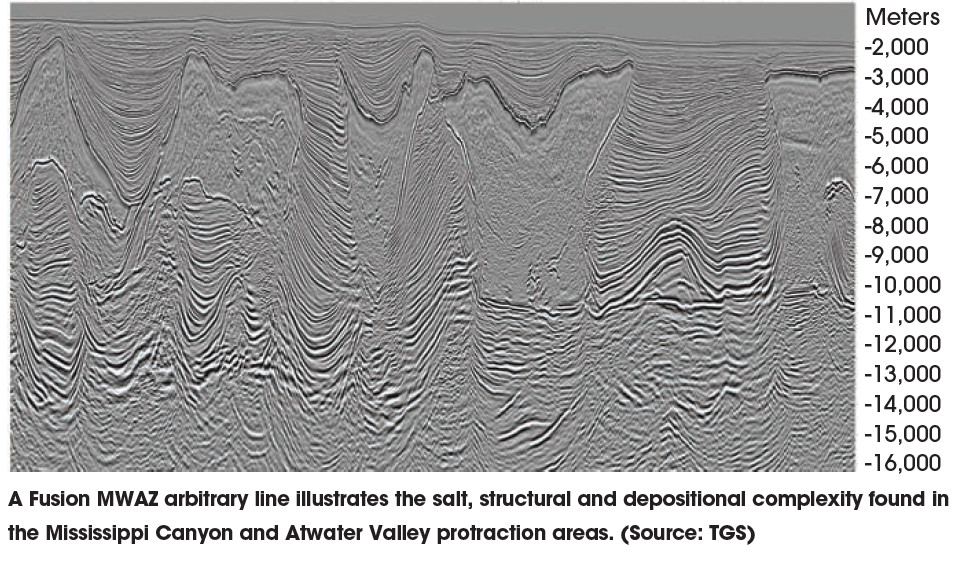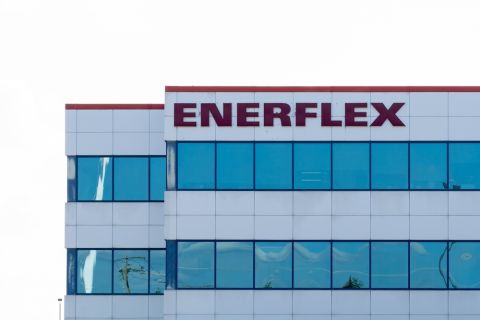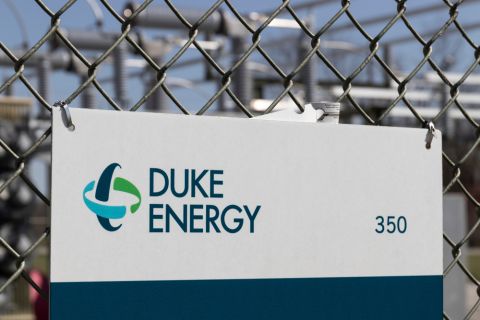
(Source: TGS)
[Editor's note: This story originally appeared in the April 2020 edition of E&P. Subscribe to the magazine here.]
New seismic and drilling technologies have ushered in a new era of prospects and discoveries in the Gulf of Mexico (GoM). The deepwater GoM, despite the two economic downturns of 2009 and 2013, has seen an upsurge in exploration efforts resulting in more than 130 new discoveries since 2005, according to the Bureau of Ocean Energy Management. This has coincided with a 29% increase in the U.S. Energy Information Administration’s (EIA) proven reserve estimates for the federal GoM from 190 MMbbl in 2005 to 268 MMbbl in the most recent EIA proven reserve release distributed in December 2018.
Apart from the technological factors influencing the rejuvenation, new geologic targets and increased infrastructure and capacity also have played a role in new discoveries. Exploration teams have shown a drive to peruse and identify new play concepts where previously inaccessible pay was not recognized in vintage seismic data. The evolution of seismic imaging and acquisition has allowed subsalt, near salt and deep Mesozoic plays to be better imaged.
Increasing illumination
The GoM has very dense seismic coverage with near-continuous acquisition over the past 30 years. 2D seismic covers the entire GoM and 3D coverage can be found in all but the deepest areas and in the eastern GoM currently restricted by a moratorium. Unfortunately, the bulk of these data is limited to narrow-azimuth (NAZ) streamer data with limited offsets and azimuths. Due to the complex depositional and structural environments found in the GoM, more precise imaging is required to increase the lateral and vertical seismic resolution required to analyze thinner and smaller geologic targets.
Increased illumination of modern prospects commonly found in the 8-km to 10-km range and often obscured by various salt structures has been made possible by advances in data processing algorithms and increases in computational power. The main challenge in keeping up with modern processing technology has been advancing the acquisition technology at the same rate to gain greater offsets and multiple azimuths, increasing the input data needed to push the modern processing techniques to their ultimate value.
The emergence in the acquisition of wide-azimuth (WAZ), multiwide-azimuth (MWAZ) and full-azimuth (FAZ) survey types acquired with a variety of streamer and vessel configurations in the past 15 years has helped to provide better input data. These modern streamer configurations all offer long offsets with broad azimuth data that have substantially helped prospective image areas and have opened new subsalt regions that historically had never been illuminated.

Although modern WAZ, FAZ and MWAZ seismic created a huge improvement over previously available NAZ data, it still has its restrictions. Namely, the long offsets typically have a minimum percentage of azimuthal coverage, leaving gaps or voids in the data. This is an issue all streamer techniques, including FAZ, have in common.
Addressing the azimuthal challenge
The challenge of gaining truly FAZ coverage has been solved using ocean-bottom node (OBN) technology. This technology allows acquisition of FAZ nodal data (FAN), which has allowed seismic processing companies the opportunity to use a rich set of input data to test and improve their modern techniques. OBNs provide the technology to apply a land seismic configuration on the bottom of the seafloor, reducing acquisition noise and better illuminating highly complex structural areas while delineating the Miocenethrough Jurassic-aged reservoirs.
Increased resolution in OBN surveys is not only an aspect of survey configuration but also can be attributed to the nodes themselves. Each node contains four seismic sensors, one hydrophone and three geophones, allowing one vertical component and two horizontal components. The technology of the equipment alone improves vertical resolution compared to streamer cables. The increase in resolution greatly helps identify zones of bypassed pay and improves structural definition.
OBNs record multiple data volumes (P-wave, hydrophone and shear wave) in one dataset. This captures the full offsets and FAZ in one pass, making the highest trace density per unit of any seismic technology available. The resolution benefits are directly related to the hydrophone data containing the primary vertical component. Shear wave data from the horizontal components continue to help improve processing techniques and have shown value in identifying hazards and further defining reservoirs and their characteristics.
An example of the technological advances leading to the modernization of acquisition and processing is seen in the multiple overlapping surveys found in the Mississippi Canyon and Atwater Valley protraction areas. The Freedom-Liberty WAZ and Patriot WAZ surveys acquired in 2009 and 2013 improved the imaging of Miocene prospects. The Fusion MWAZ survey, completed in 2018, is a reprocessing of these data that combines multiple azimuths leading to an improved velocity model and improved imaging in many areas. In 2019 OBNs were deployed to create the Amendment FAN survey where FAZs and ultralong offsets provided optimal input data for full-waveform inversion (FWI) processing, leading to a refined velocity model and improving imaging in and around complex salt and at Mesozoic depths.
The Amendment FAN survey is the industry’s first and largest ultralong offset deepwater multiclient survey. The survey has offsets out to 60,000 m, covers 118 Outer Continental Shelf lease blocks and reaches water depths of 2,070 m. The source volume was a 5,110-cu.-inch air gun used to record signal down to 1.5 Hz and at ultralong offsets. The sparse nodal configuration of the survey is a modern approach to maximize input data while minimizing costs.
Combining the Fusion MWAZ data with the sparse nodal data of Amendment FAN introduced a large quantity of input data from multiple datasets. Utilizing the ultralong offsets and FAZ data from Amendment FAN, it is possible to build a new velocity model using FWI. The OBN data in the FWI velocity model ensures the model is tied structurally to the underlying geology with model features following largescale imaging trends. Refraction and reflection-based FWI model updates can provide details for the high-resolution velocity contrasts. Alternating iterations of the image-guided tomography are then able to resolve the larger scale velocity updates needed to correct for bulk traveltime errors. This approach leads to a velocity model that is geologically constrained and illustrates high-contrast features responding well with the imaged anomalous regions. Observed structures below high-contrast features are greatly improved.
A key objective for the Amendment FAN survey is to improve illumination of targets, particularly in subsalt basins. This is obtained by a very dense and large offset grid that allows ray paths to travel, reflect and refract deeper with the salt flanks interfaces. The improved subsalt refractions diving waves easily reach the Louann Salt. An uplift in data quality over existing data will generally be attributed to the unprecedented sampling of azimuths and ultralong offsets. This is an advancement in the application of refraction FWI to improve velocity model building. The model is expected to increase coverage of the subsurface and result in subsalt events for reflection FWI and multiarrival tomography.
Data volumes created using modern OBN technology, acquisition techniques and processing models are defining a new baseline for quality subsurface imaging using FAZ, ultralong offsets, small bin size and exponentially more measurements per area. These modern techniques have already begun to improve how the industry acquires data and will continue to provide new and improved subsurface insight. Uncovering bypassed pay and discovering untapped reservoirs will become a more common occurrence in the GoM deepwater, improving drilling success, field development and the discovery of new and deeper zones.
Recommended Reading
Enerflex Appoints Thomas B. Tyree to Board
2024-03-12 - Tyree currently serves on Antero Resources’ board and recently served as chairman of Northwoods Energy LLC in 2023.
Bobby Tudor on Capital Access and Oil, Gas Participation in the Energy Transition
2024-04-05 - Bobby Tudor, the founder and CEO of Artemis Energy Partners, says while public companies are generating cash, private equity firms in the upstream business are facing more difficulties raising new funds, in this Hart Energy Exclusive interview.
Kimmeridge Fast Forwards on SilverBow with Takeover Bid
2024-03-13 - Investment firm Kimmeridge Energy Management, which first asked for additional SilverBow Resources board seats, has followed up with a buyout offer. A deal would make a nearly 1 Bcfe/d Eagle Ford pureplay.
Duke Energy Appoints Harry Sideris to President
2024-03-15 - Steve Young, executive vice president and chief commercial officer, will retire from Duke Energy on June 30.
Laredo Oil Subsidiary, Erehwon Enter Into Drilling Agreement with Texakoma
2024-03-14 - The agreement with Lustre Oil and Erehwon Oil & Gas would allow Texakoma to participate in the development of 7,375 net acres of mineral rights in Valley County, Montana.





